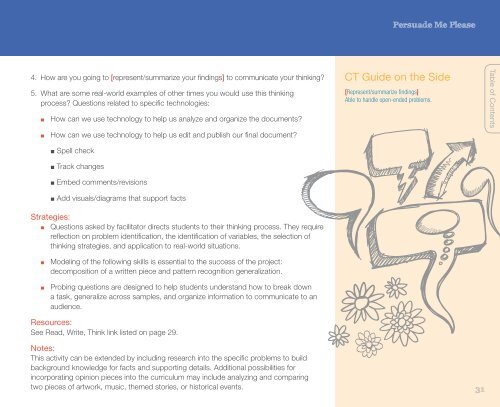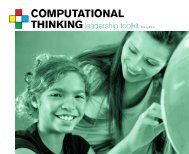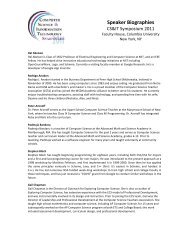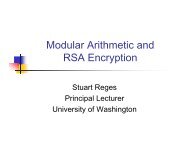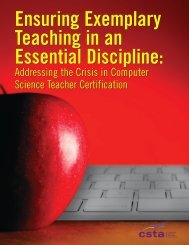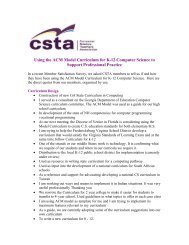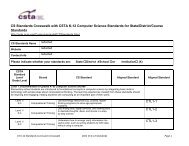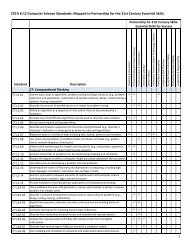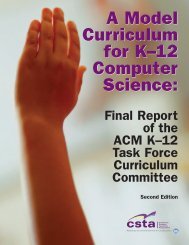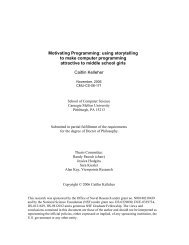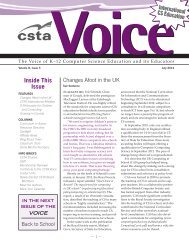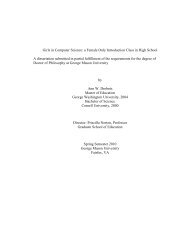Computational Thinking Teacher Resources - CSTA
Computational Thinking Teacher Resources - CSTA
Computational Thinking Teacher Resources - CSTA
You also want an ePaper? Increase the reach of your titles
YUMPU automatically turns print PDFs into web optimized ePapers that Google loves.
Persuade Me Please4. How are you going to [represent/summarize your findings] to communicate your thinking?5. What are some real-world examples of other times you would use this thinkingprocess? Questions related to specific technologies:▪ How can we use technology to help us analyze and organize the documents?▪ How can we use technology to help us edit and publish our final document?▪ Spell check▪ Track changes▪ Embed comments/revisions▪ Add visuals/diagrams that support factsStrategies:▪ Questions asked by facilitator directs students to their thinking process. They requirereflection on problem identification, the identification of variables, the selection ofthinking strategies, and application to real-world situations.▪ Modeling of the following skills is essential to the success of the project:decomposition of a written piece and pattern recognition generalization.▪ Probing questions are designed to help students understand how to break downa task, generalize across samples, and organize information to communicate to anaudience.<strong>Resources</strong>:See Read, Write, Think link listed on page 29.Notes:This activity can be extended by including research into the specific problems to buildbackground knowledge for facts and supporting details. Additional possibilities forincorporating opinion pieces into the curriculum may include analyzing and comparingtwo pieces of artwork, music, themed stories, or historical events.CT Guide on the Side[Represent/summarize findings]Able to handle open-ended problems.31Table of Contents


